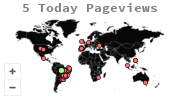The Influence of Big Data Adoption on the Technology Knowledge Analysis and the Use Propensity by Managers
DOI:
https://doi.org/10.23925/2178-0080.2022v24i153111Keywords:
Big Data, Technology, Knowledge Use propensityAbstract
Big Data emerges as a technology that enhances an organization's perspective in facilitating strategic decision-making. In light of this, the objective of this study is to analyze the influence of Big Data adoption on technology knowledge analysis and propensity for use by managers. The sample consisted of 118 organizations represented by their respective managers. The research instrument was adapted to Lunardi, Dolci, and Maçada's (2010) model through data collection using a survey. The Partial Least Squares (PLS) model treated the data. As a result, the Perceived Utility construct was the most significant, indicating that respondents keep up with emerging technological trends and consider them relevant. They understand that Big Data applications simplify tasks and contribute to organizational performance.
References
Ali, A., Ariffin, N., Arumugam, N., Salleh, F., & Yusof, N. (2012). Perceptions of IT among SMEs Operators in Malaysia. Asian Social Science. August; 8(10):68-75.
Avram, M. G. (2014) Advantages and Challenges of Adoption Cloud Computing from an Enterprise Perspective. Procedia Technology, 12, 529-534, https:// doi.org/10.1016/j.protcy.2013.12.525
Beath, C., Becerra-Fernandez, I., Ross, J., & Short, J. (2012). Finding value in the information explosion. MIT Sloan Management Review, 53(4).
Brousell, L. (2013) Seeking the Elusive Data Scientist. CIO, Framingham, 26 (10).
Callebaut, W. (2012) Scientific perspectivism: A philosopher of science’s response to the challenge of big data biology. Studies in history and philosophy of biological sciences, 43(1), 69-80, DOI: 10.1016/j.shpsc.2011.10.007
Castro, S. (2014) Optimizing your data management for big data. Journal of Direct, Data and Digital Marketing Practice, 16(1), 15-18, https://doi.org/10.1057/ dddmp.2014.46
Chen, H., Chiang, R. H. L. & Storey, V. C. (2014) Business Intelligence and Analytics: from Big Data to Big Impact. MIS Quarterly, 36(4), 1165-1188.
Duane, A., O'Reilly, P., & Andreev, P. (2014) Realising M-Payments: modelling consumers' willingness to M-pay using Smart Phones. Behaviour & Information Technology, 33(4), 318-334, https://doi.org/10.1080/0144929X.2012.745608
Fornell, C., & Larcker, D. F. (1981) Evaluating structural equation models with unobservable variables and measurement error. Journal of Marketing Research, 18(1), 39-50, https://doi.org/10.2307/3151312
Goes, P. B. (2014) Big Data and IS Research. MIS Quarterly, 38(3).
Hair, J. F., Hult, G. T. M., Ringle, C., & Sarstedt, M. (2014) A primer on partial least squares structural equation modeling (PLS-SEM), Sage Publications. https://doi.org/ 10.1080/1743727X.2015.1005806
Hilbert, M., & Lopez, P. (2011) The World’s Technological Capacity to Store, Communicate, and Compute Information, Science, 332 (6025), 60-65, https://doi.org/10.1126/science.1200970
King, A. A., & Baatartogtokh, B. (2015) How Useful is the Theory of Disruptive Innovation? MIT Sloan Management Review, 57(1), 77-90, Cambridge.
Kwon, O., Lee, N., & Shinb, B. (2014) Data quality management, data usage experience and acquisition intention of big data analytics, International Journal of Information Management, 34(3), 387-394, https://doi.org/ 10.1016/j.ijinfomgt.2014.02.002
Leeflang, P. S. H., Verhoef, P. C., Dahlström, P., & Freundt, T. (2014) Challenges and solutions for marketing in a digital era, European Management Journal, 32(1), 1-12, https://doi.org/10.1016/j.emj.2013.12.001
Laney, D. (2001) 3D data management: Controlling data volume, velocity and variety, Meta Group.
Lunardi, G. L., Dolci, P. C., & Maçada, A. C. G. (2010) Adoção de tecnologia de informação e seu impacto no desempenho organizacional: um estudo realizado com micro e pequenas empresas, Revista de Administração, São Paulo, 45(1), 05-17, jan./fev./mar, https://doi.org/10.1016/S0080-2107(16)30505-2
Lunardi, G. L., Dolci, D. B., & Wendland, J. (2013) Internet Móvel nas Organizações: Fatores de Adoção e Impactos sobre o Desempenho, Revista de Administração Contemporânea, 17(6), 679-703, https://doi.org/10.1590/S1415-65552013000600004
Malhotra, N. K. (2014) Essentials of Marketing Research: A Hands-On Orientation, 1st. Edition, Prentice Hall, ISBN: 978-0137066735
Markham, S. K., Kowolenko, M., & Michaelis, T. L. (2015) Unstructured text analytics to support new product development decisions, Research Technology Management, 58(2), 30-39, https://doi.org/10.5437/08956308X5802291
Oliveira, B. M. K., & Ramos, A. S. M. (2009) Utilidade Percebida, Facilidade de Uso e Autoeficácia na Intenção de Continuidade de Utilização do Moodle: uma Pesquisa com Alunos de um Projeto Piloto da Universidade Aberta do Brasil, EnADI, Recife, ISSN 2177-2487.
Prates, G., & Ospina, M. (2004) Tecnologia da informação em pequenas empresas: fatores de êxito, restrições e benefícios, Revista de Administração Contemporânea, 8(2), 09-26, DOI: 10.1590/S1415-65552004000200002.
Refermat, E. (2015) What is Big Data? Automatic Merchandiser, 57(1), 22-26, Ft. Atkinson.
Shmueli, G., & Koppius, O. R. (2011) Predictive analytics in information systems research, MIS Quarterly, 35(3), 553-572, DOI: 10.2307/23042796.
Weber, K., Otto, B. and Österle, H. (2009) One size does not fit all – a contingency approach to data governance, Journal of Data and Information Quality, 1(1), article 4, 27p. https://doi.org/10.1145/1515693.1515696
Zikopoulos, P. C. and Eaton, C. (2012) Understanding Big Data: Analytics for Enterprise Class Hadoop and streaming data, McGraw-Hill.
Downloads
Published
How to Cite
Issue
Section
License
Copyright (c) 2021 Management in Dialogue Review

This work is licensed under a Creative Commons Attribution 4.0 International License.
Authors who publish in this journal agree to the following terms:
1. Authors retain the copyright and grant the journal the right of first publication, with the work licensed simultaneously under a Creative Commons Attribution License after publication, allowing the sharing of work with acknowledgment of the authorship of the work and initial publication in this journal.
2. Authors are authorized to take additional contracts separately, for non-exclusive distribution of the version of the work published in this journal (eg publish in institutional repository or as a book chapter), with acknowledgment of authorship and initial publication in this journal.
3. Authors are allowed and encouraged to publish and distribute their work online (eg in institutional repositories or on their personal page) at any point before or during the editorial process, as this can generate productive changes, as well as increase the and the citation of the published work (See The Effect of Free Access).







